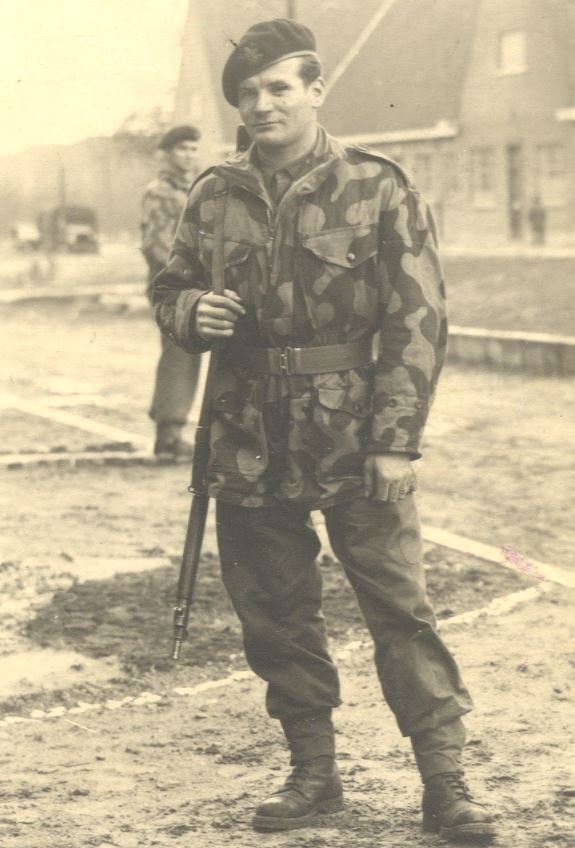SCHOU, Charles

Registration Nr.: 02706
Birthday: 25.10.1926, Dudelange
Father: Mathias SCHOU
Mother: M. GREVIS
Service entry: 06.05.1946
Contingent: 1st
Rank: Soldat de 2e Classe
Death: 23.12.2007
Born in 1926, Charles was part of the last wave of Luxembourgers forcibly recruited into the German Wehrmacht. After finishing the RAD, he experienced the horrors of war on the Eastern Front. Around Dessau, he deserted along with other Luxembourgish recruits and became a POW of the Soviets. After a long journey across Germany, he finally got home on 29 September 1945.
He was called up for his compulsory military service on 6 May 1946. With his father about to retire and thus on the edge of losing a large portion of his salary, the Army granted Charles a shortened military term of 5 months. In September 1946, he was released so he could work again at the ARBED factories in the south of Luxembourg.
Four years later, in September 1950, he volunteered for the first contingent. Only two weeks after he had first set foot on Korean soil, he suffered from an accident on 13 February 1951. While changing the magazine of Stütz’s gun, he shot himself in the left foot. Henceforth, he was no longer able to serve and was transferred to Japan to be treated in the Tokyo General Hospital. Charles spent several months there and learned about Japanese culture. An elaborate collection of photographs testifies to his fascination with all things Japanese. When he had almost fully recovered from his injury, military officials decided to transfer him by air to a British medical institution in Wroughton. Several engine failures, one of which occurred mid-flight over the Mediterranean Sea, forced his plane to return to Malta for an emergency landing. On 20 May 1951, Charles Schou, accompanied by several French and Dutch soldiers, landed at Lyneham Airport near Bristol. Two days later, he was eventually flown to Brussels. From there, he returned to Luxembourg with a friend on 28 May 1951.
On 6 August 1951, he joined the guard unit as a member of their social service and worked as a librarian until the end of September. After his military discharge, he resumed working for the ARBED, where he stayed until his retirement.





